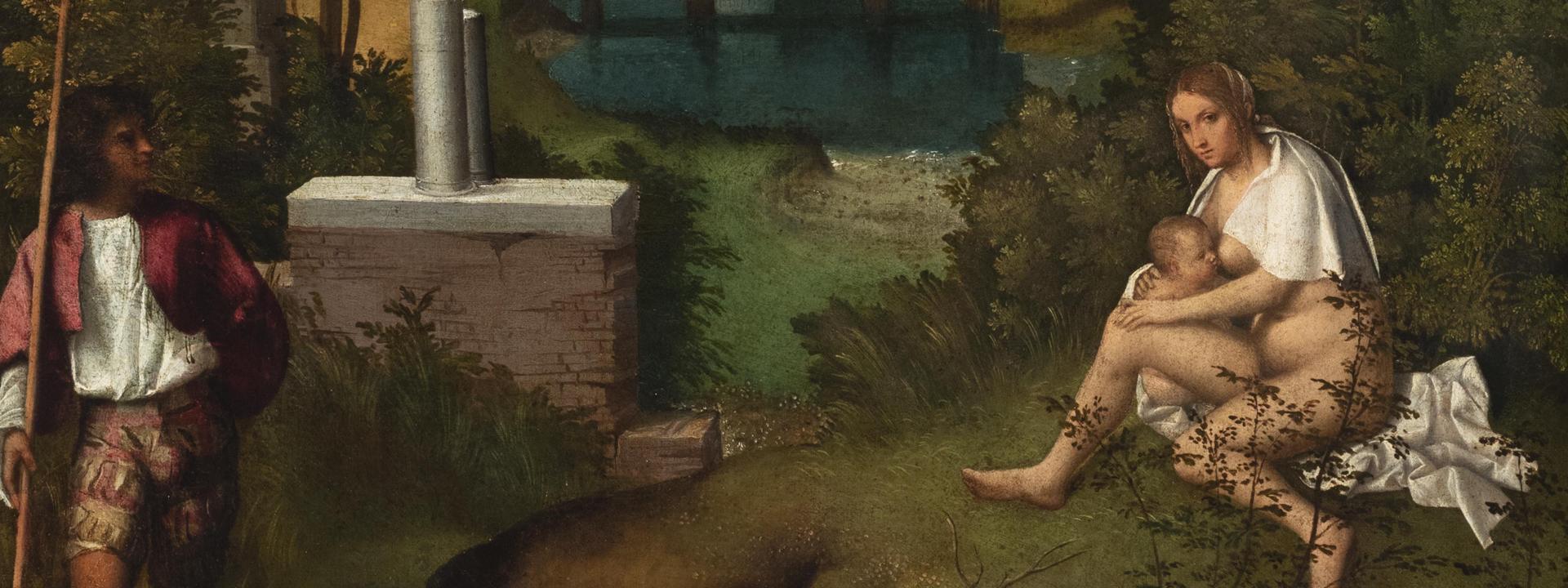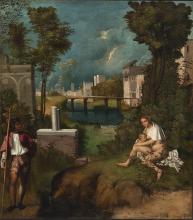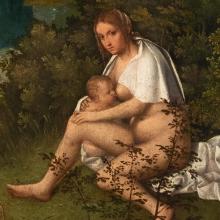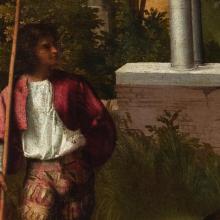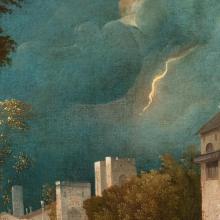Attested as part of Gabriele Vendramin’s collection by Marcantonio Michiel in 1530 and later in the sixteenth- and seventeenth-century family inventories, The Tempest followed Giorgione’s other masterpiece, The Old Woman, into the collections of the merchant Cristoforo Orsetti before reappearing in the Manfrin collection, from which it was purchased by the Italian state in 1856 and sent to the Gallerie dell’Accademia.
The mysterious iconography, centring on two characters (a young soldier and a naked mother suckling her child) whose relationship is not immediately clear, has provoked the most diverse interpretations, as have the landscape and the sky rent by a bolt of lightning which has given the painting its title. It has recently been proposed (Falciani) that the painting’s iconography should be read in connection with a little poem in praise of the Vendramin family that arguably identifies the soldier with the staff as Silvio, Enea’s second-born son, while his mother Lavinia is seen in the background as she gives birth to him in the woods (hence his name Silvio). Just as varied are the dates proposed for the painting’s execution, which go from 1503 to 1509. It is nonetheless plausible that The Tempest was commissioned by Gabriele Vendramin in about 1504, a decisive year in Giorgione’s personal development, and therefore much earlier than the “monumental” works of his last few years.
